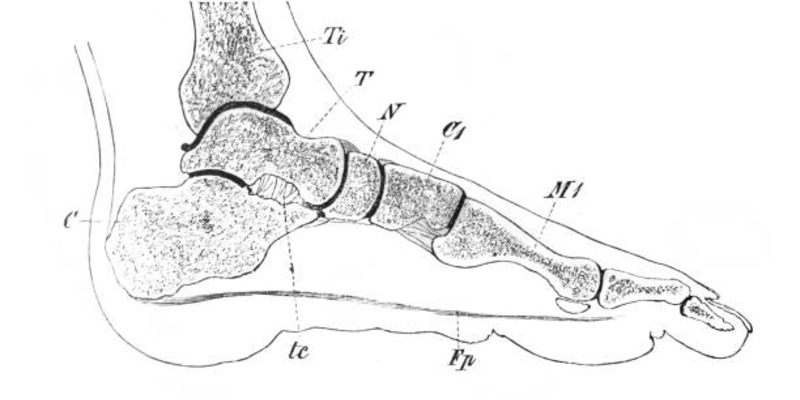Understanding Shoulder Pain: Causes, Symptoms, and Treatment Options
Oct 26, 2023 By Madison Evans
Shoulder pain can be a common and debilitating issue that affects many individuals, including office workers and athletes. It can significantly impact daily life, making even the simplest tasks challenging. In this blog post, we will explore various aspects of shoulder pain, including its symptoms, common causes, treatments, home exercises for relief, and prevention tips. Whether you're experiencing shoulder pain or want to learn more about it, this post aims to provide valuable information to help you understand and manage this condition.
Symptoms of Shoulder Pain
Shoulder pain can manifest in various ways, and it's important to recognize the signs and indicators. Some common symptoms include:
- Dull or sharp pain in the shoulder joint
- Limited range of motion
- Difficulty lifting or carrying objects
- Weakness or instability in the shoulder
- Stiffness or swelling
If you're experiencing any of these symptoms, it's essential to seek medical advice to determine the underlying cause and receive appropriate treatment.
Common Causes of Shoulder Pain

Understanding the common causes of shoulder pain can help in identifying the root cause and seeking the right treatment. Some of the most prevalent causes include:
- Overuse and Repetitive Strain Injuries: Engaging in repetitive shoulder movements or activities can lead to inflammation and pain.
- Rotator Cuff Tears: Tears in the muscles and tendons of the rotator cuff can cause significant shoulder pain.
- Frozen Shoulder: Also known as adhesive capsulitis, this condition causes stiffness and restricted movement in the shoulder joint.
- Arthritis: Osteoarthritis or rheumatoid arthritis can affect the shoulder joint, leading to pain and inflammation.
Treatments for Shoulder Pain
Several treatment options are available for shoulder pain, depending on the severity and underlying cause. These may include:
- Physical Therapy and Exercises: Strengthening and stretching exercises can help improve shoulder function and relieve pain.
- Medications and Pain Management: Nonsteroidal anti-inflammatory drugs (NSAIDs) and pain relievers may be prescribed to alleviate discomfort.
- Injections and Surgical Options: In some cases, corticosteroid injections or surgical interventions may be necessary for pain relief and improved mobility.
- Alternative Therapies: Some individuals find relief through alternative therapies like acupuncture or chiropractic care. However, it's important to consult with a healthcare professional before pursuing these options.
The choice of treatment will depend on individual circumstances and should be discussed with a medical professional.
Home Exercises for Shoulder Pain Relief
In addition to professional treatment, certain exercises can be performed at home to help alleviate shoulder pain. These exercises aim to improve the range of motion, strengthen the shoulder muscles, and increase flexibility. Here are a few examples:
- Range of Motion Exercises: Pendulum swings, arm circles, and wall climbing exercises can help improve mobility.
- Strengthening Exercises: Shoulder presses, rowing exercises, and resistance band exercises can target the muscles surrounding the shoulder joint.
- Stretching Exercises: Cross-body stretches, shoulder rolls, and overhead stretches can help relieve tension and improve flexibility.
It's important to perform these exercises correctly and consult with a healthcare professional before starting any exercise program.
Prevention Tips for Shoulder Pain

Prevention is key when it comes to shoulder pain. By adopting healthy habits and following these tips, you can reduce the risk of developing shoulder pain:
- Maintain Proper Posture and Ergonomics: Whether you're sitting at a desk or engaging in physical activities, ensure your posture is correct and ergonomic.
- Regular Exercise and Strength Training: Strengthening the muscles around the shoulder joint can provide stability and reduce the risk of injury.
- Avoid Excessive Overhead Activities: If you're engaging in activities that involve repetitive overhead movements, take breaks and listen to your body's signals.
By incorporating these preventive measures into your daily routine, you can promote shoulder health and minimize the chances of experiencing pain.
When to See a Doctor
If you're experiencing shoulder pain, it's important to seek medical advice. If your condition is accompanied by signs such as
- Fever
- Redness
- Swelling
Medical attention should be sought immediately. Your doctor can assess the situation and provide the right course of action for your individual needs.
Conclusion
Shoulder pain can significantly impact daily life and hinder your ability to perform even the simplest tasks. Understanding the symptoms, common causes, and available treatments is essential for effective management. Additionally, incorporating home exercises and following prevention tips can contribute to maintaining shoulder health in the long run. Remember, if you're experiencing persistent or severe shoulder pain, it's important to seek professional help from a healthcare provider or physiotherapist. Take care of your shoulders, and prioritize your well-being.
-
 Feb 14, 2024
Feb 14, 2024Understanding Blood Cancer: A Closer Look at its 3 Main Types
Dive into the three main types of blood cancer: leukemia, Hodgkin’s lymphoma and multiple myeloma. Understand their causes, symptoms, and treatment options.
-
 Nov 08, 2023
Nov 08, 2023Discover the relationship between baby powder and cancer, and Johnson and Johnson baby powder lawsuit.
Baby Powder's Possible Connection to Cancer Risk
-
 Nov 19, 2023
Nov 19, 2023Unveiling the Mystery: Key Signs and Symptoms of Stomach Cancer
This comprehensive guide offers vital knowledge about stomach cancer, highlighting its symptoms, the importance of early detection, prevention methods and treatment options.
-
 Jan 21, 2024
Jan 21, 2024Comprehensive Guide to Plantar Fasciitis Treatment Options
Discover effective treatment options for plantar fasciitis, from at-home remedies to medical interventions. Understand the condition and improve your foot health.
